How To Use Sous Vide To Pasteurize Eggs At Home
If you’re a foodie who loves indulging in delicious dishes but is hesitant to try recipes that call for raw eggs due to the risk of Salmonella, I have good news for you! Using the Sous Vide method, you can easily pasteurize eggs at home and confidently cook mouth-watering recipes like authentic Italian Carbonara pasta, a classic Italian dessert named Tiramisu, Caesar salad dressing, Aioli, mayonnaise, eggnog, Ice cream, and the list is endless. My step-by-step guide will show you how to use Sous Vide to pasteurize eggs and elevate your cooking game to the next level. Read on to learn more!

Disclaimer Notice: This website contains affiliate links. If you make a purchase through these links, I may earn a commission at no extra cost to you. I only endorse products or services I believe will be valuable to my readers. I appreciate your support.
In my recent blog post, I shared an authentic recipe for Italian Carbonara pasta that doesn’t require cream. Traditional Carbonara sauce is made by blending raw eggs and finely grated pecorino cheese to produce a creamy texture. While working on the recipe, I observed that many people are anxious about consuming raw eggs and have concerns about Salmonella. Thus, I am writing another post to teach you how to pasteurize eggs at home safely, utilizing the Sous Vide technique. This method will help you relish this delectable pasta dish without any worries.
Recipe Snapshot
EASE: Easy; just set to the correct temperature and timer.
PROS: Make raw eggs safer to eat.
CONS: A little time-consuming.
WOULD I MAKE THIS AGAIN? Absolutely, especially when I want to make my favorite Carbonara and Tiramisu.
What are pasteurized eggs?

Pasteurization is a specialized heating process that raw eggs undergo to eliminate potentially harmful bacteria like Salmonella. The process involves heating eggs in their shell in a water bath at exactly 135F/57C. This method can kill off most of the bacteria present in the eggs without cooking or altering their nutritional value. Pasteurization makes eggs safer to eat raw or undercooked by killing off the bacteria.
What is the difference between pasteurized VS unpasteurized eggs?
The main difference between pasteurized and unpasteurized eggs is that pasteurized eggs have been treated to kill any potential bacteria that may be present in the eggs. On the other hand, unpasteurized eggs have not been treated this way and may contain harmful bacteria, such as salmonella, that can cause foodborne illness. Some other differences between pasteurized and unpasteurized eggs include the following:
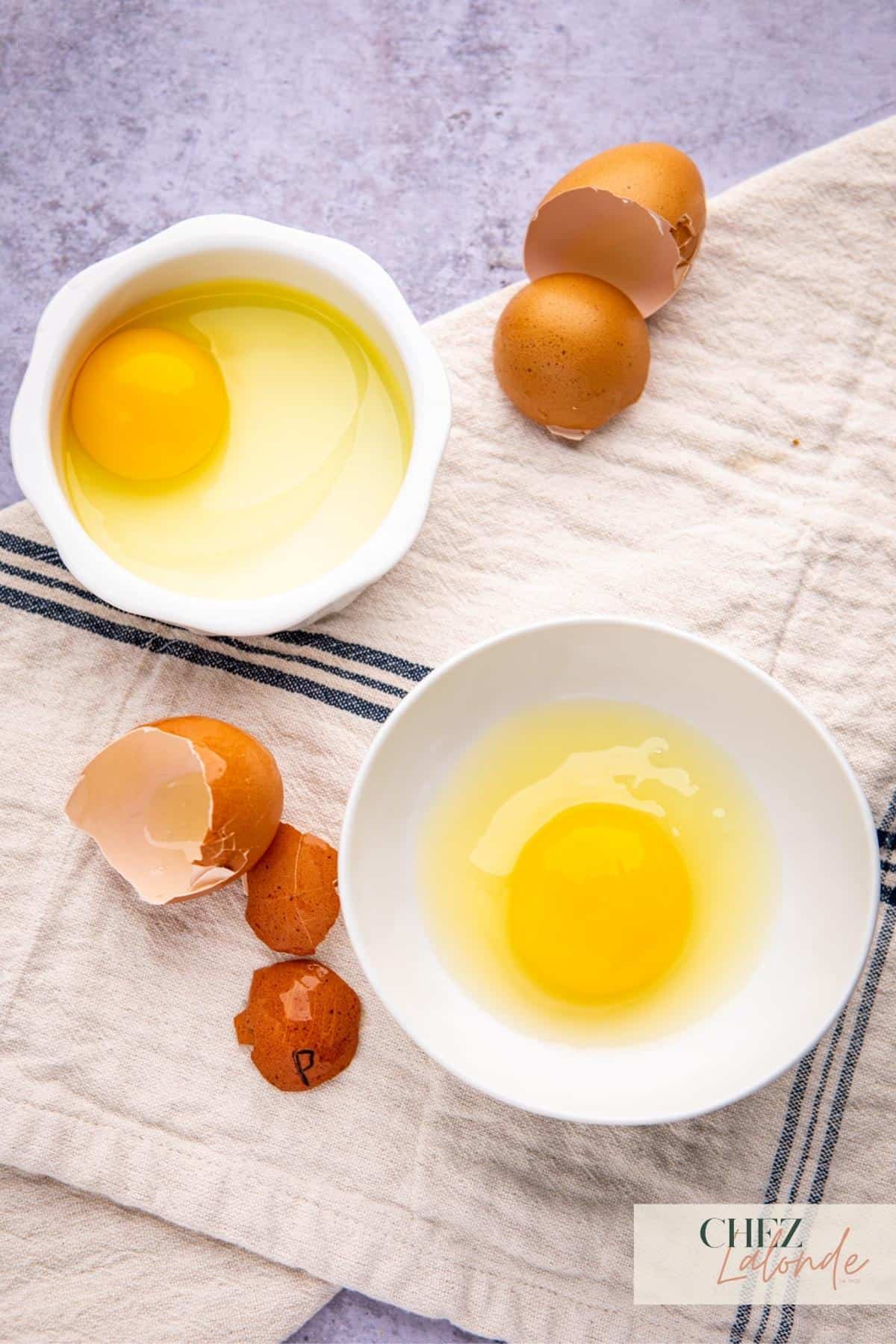
- Shelf Life: Pasteurized eggs have a longer shelf life than unpasteurized eggs because the pasteurization process helps to kill bacteria that can cause spoilage.
- Availability: Pasteurized eggs may not be as widely available as unpasteurized eggs, as they are a specialty product not produced by all suppliers.
- Cooking: Pasteurized eggs can be used in recipes that call for raw eggs, while unpasteurized eggs are not recommended due to the risk of bacterial contamination.
- Price: Pasteurized eggs are slightly more expensive than unpasteurized eggs due to the additional processing required.
How to indicate if eggs have been pasteurized?
After pasteurization at home, the egg retains its nutritional value, despite not being cooked. However, there are visible differences in the eggs’ color and texture, such as cloudier egg whites and firmer egg yolks. Check out our side-by-side comparison of a pasteurized egg versus a raw egg to see the differences for yourself. However, if you got store-bought pasteurized eggs, There should be some labels or stamps on the eggs or their packaging to indicate they have undergone the pasteurization process.
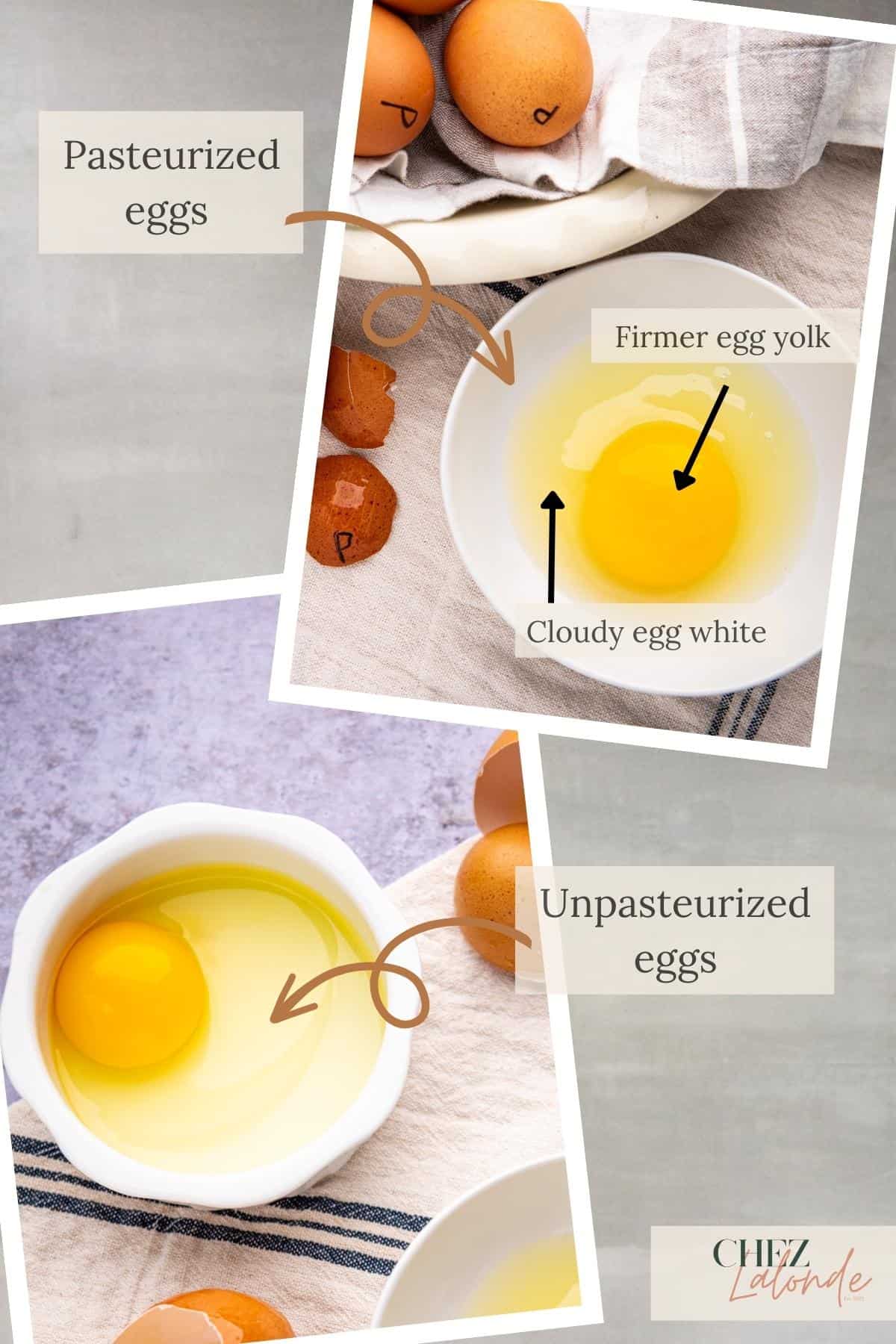
Are all store-bought eggs pasteurized?
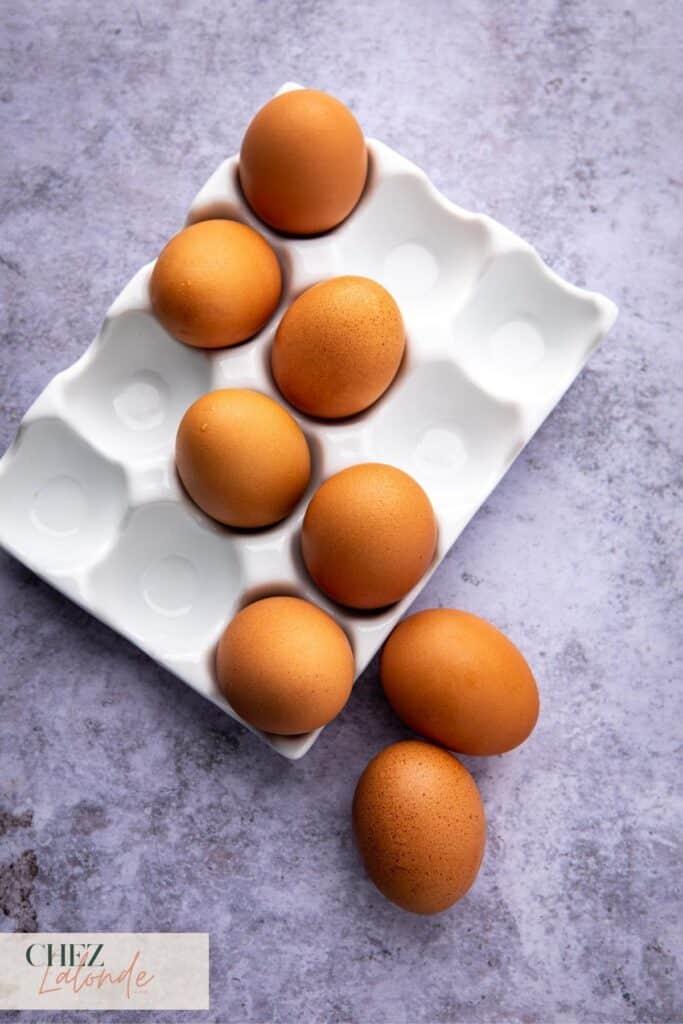
It’s an interesting question, and I did some research to find out. According to the USDA’s food safety law, all US “egg products” must be pasteurized. Egg products can come in various forms, like liquid (Liquid eggs in carton), frozen (Egg breakfast sandwiches), or dried (Egg powder), and can be used in many recipes. But if you’re buying eggs in their shells, they’re not considered “egg products” and may not be pasteurized unless specifically labeled. So, if you want to make a recipe that requires pasteurized eggs, check the label or pasteurize them yourself at home using the Sous Vide method.

Tips and tricks on pasteurizing eggs using the Sous Vide method:
Pasteurizing eggs using the Sous Vide method is the most simple and effective way to ensure safety when using raw eggs in recipes. Before we begin, if you are not yet familiar with this French culinary technique named Sous Vide, I highly recommend visiting my post on “Sous Vide Filet Mignon” to learn more. There, I provided a detailed explanation of the technique and its benefits.
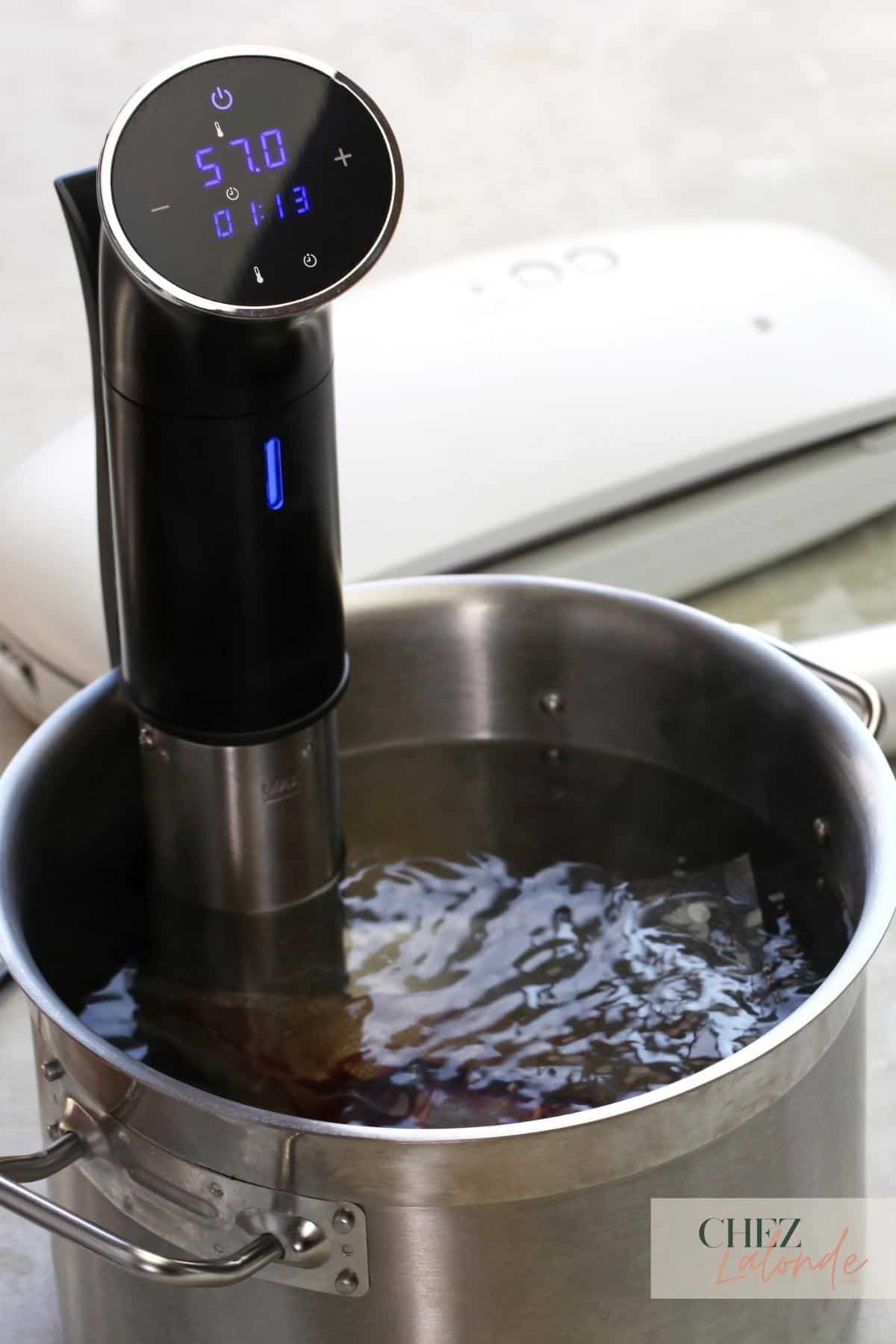
- Select the correct equipment: To pasteurize eggs using the sous vide method, you’ll need specific equipment, including a Sous Vide precision cooker and a vacuum-sealed or Ziploc bag. If you don’t have a Sous Vide cooker, you can find them online or in stores like Williams Sonoma or Sur La Table. I’ve found the “Anova” brand reliable and economical. However, there are other good options out there as well. If you have an Instant Pot, some models have a Sous Vide function built in, so you don’t need to spend extra money on a Sous Vide precision cooker.
- Use the right temperature: You definitely want to get your temperature setting right when pasteurizing eggs with the Sous Vide method. The goal is to pasteurize them and not turn them into hard-boiled eggs. So, the trick is maintaining the Sous Vide temperature at 135F/57C. I’ve read some people online suggesting setting the temperature to 140F/60C, but trust me, that’s too hot. I’ve tried it, and it doesn’t work as well. Many experts have tested this temperature setting and agree that 135F/57C is the sweet spot. If you set the temperature too low, the eggs won’t be pasteurized correctly, and if you set it too high, such as over 141F/61C and above, you’ll cook the egg completely. So, set your temperature precisely, and your pasteurized eggs will always be perfect!
- Timing is important: According to Anova’s website, when using the Sous Vide method to pasteurize eggs, it’s recommended to immerse them in the heated water bath for exactly one hour and fifteen minutes.
Step-by-Step instructions on pasteurizing eggs at home using Sous Vide:
Step 1: Wash your eggs with cold water and pat dry.
Step 2: Put the eggs (with shells) into a vacuum-sealed or Ziploc bag.

Step 3: Fill a large pot with water and set your Sous Vide immersion circulator to 135F/57C.
Step 4: Once the hot water reaches the desired temperature, add the bag of eggs to the pot.
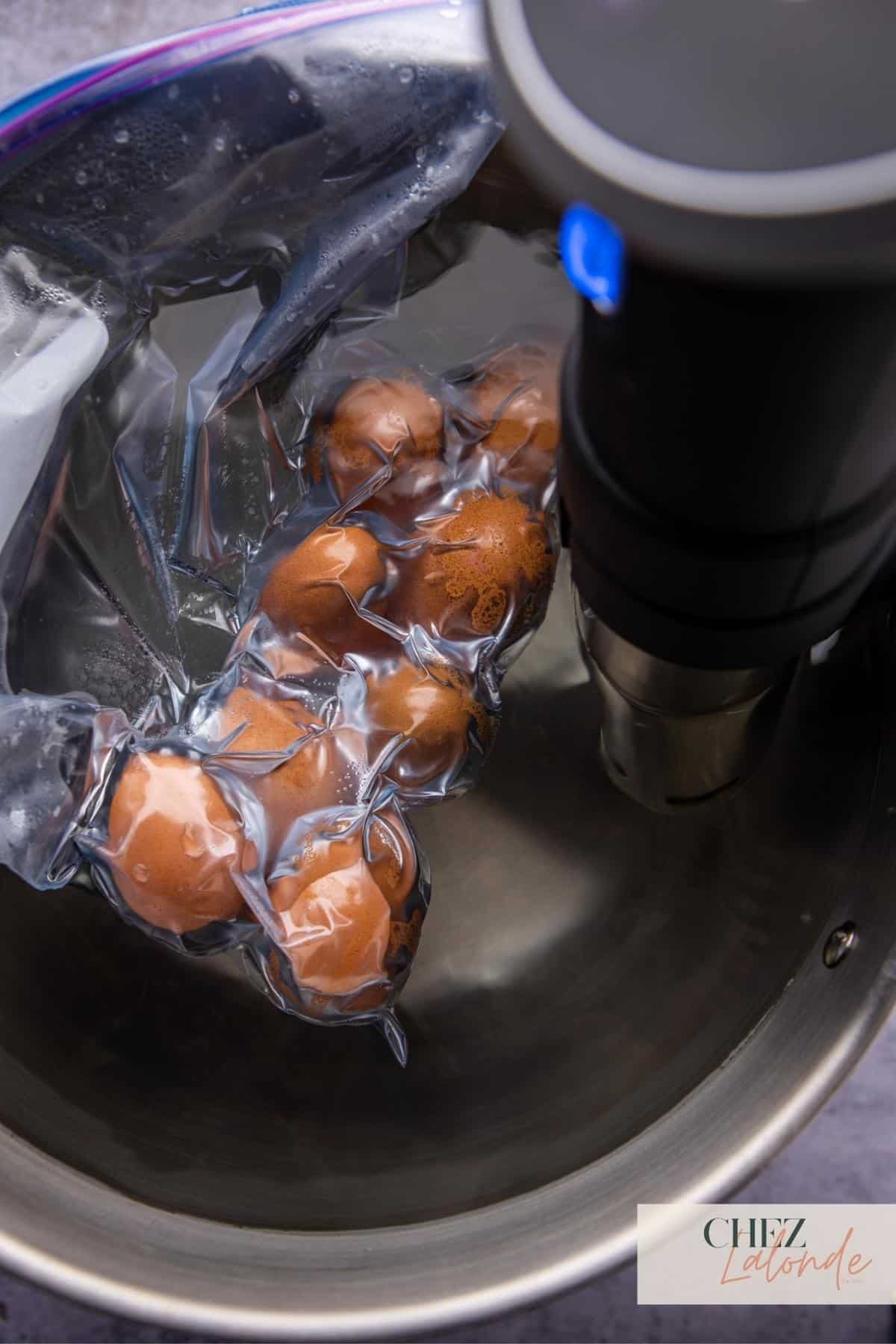
Step 5: Set a timer for 1 hour and 15 minutes. This time length allows the eggs to be fully pasteurized.
Step 6: Prepare an ice bath five minutes before the timer goes off.
Step 7: After the timer goes off, turn off your Sous Vide machine, transfer the bag of pasteurized eggs to the ice bath, and let them cool for 20 minutes.
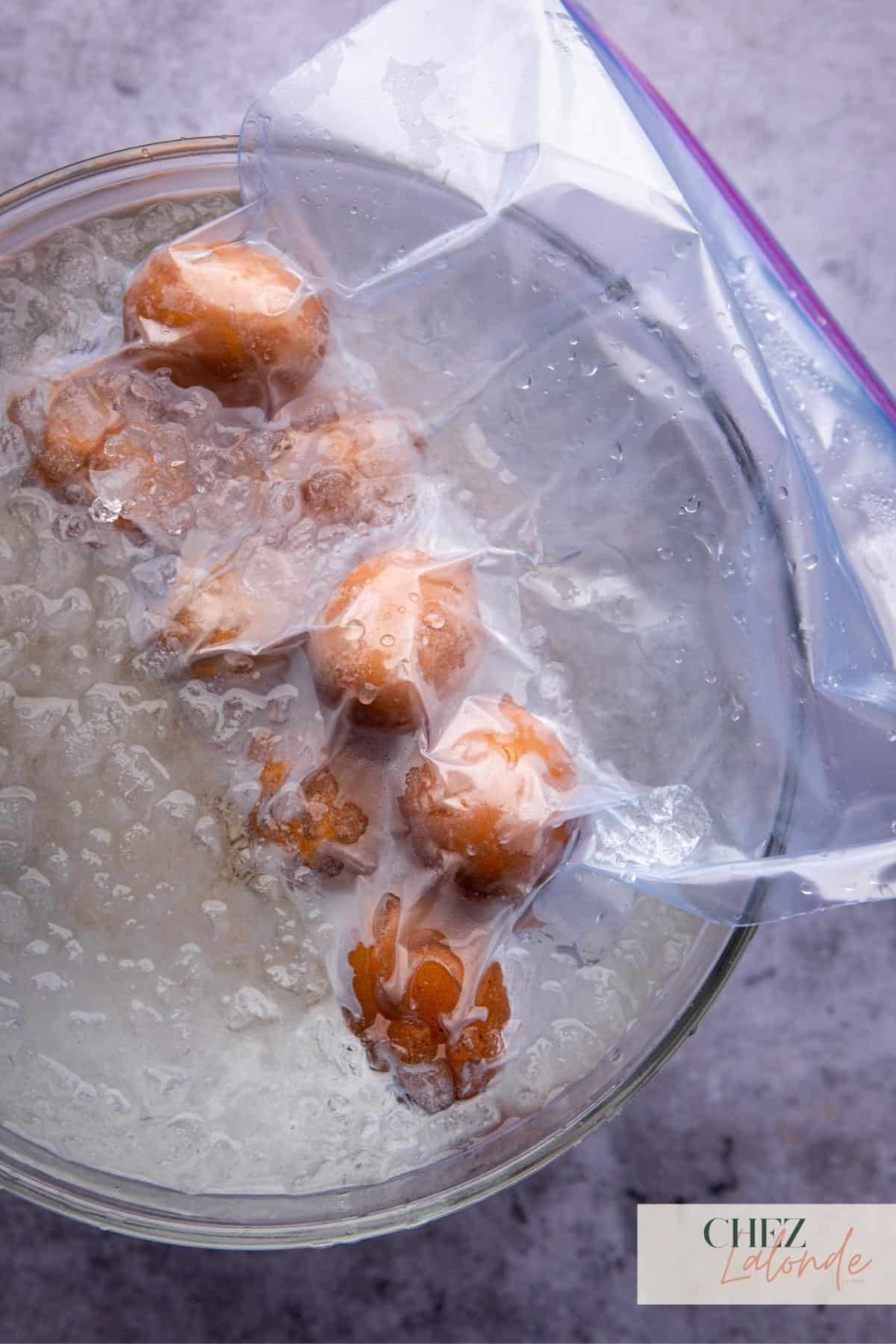
Step 8: Remove the eggs from the bag, dry them, and mark them with an “X” or “P” to indicate pasteurization. Do not mix them with raw eggs.

Step 9: Refrigerate the eggs immediately and use them within 5 weeks.
Is it safe to pasteurize eggs at home?
If you follow my instructions, it is safe to pasteurize eggs at home using the Sous Vide method. When you pasteurize eggs using this method, you are exposing your eggs to a specific temperature and time to kill any bacteria, such as salmonella, that may be present. Using fresh eggs and maintaining the water bath temperature throughout the pasteurization process is important. Following these guidelines, you can safely pasteurize your eggs at home and reduce the risk of foodborne illness.
What is salmonella?
Salmonella is a type of bacteria that can cause foodborne illness. It’s commonly found in the shell of raw or undercooked eggs, poultry, meat, and other foods.
Symptoms of salmonella infection include diarrhea, fever, and abdominal cramps. Severe cases can lead to hospitalization and even death, particularly for vulnerable people such as pregnant women, the elderly, infants, and those with weakened immune systems.
It’s important to handle and cook food properly to prevent salmonella contamination.
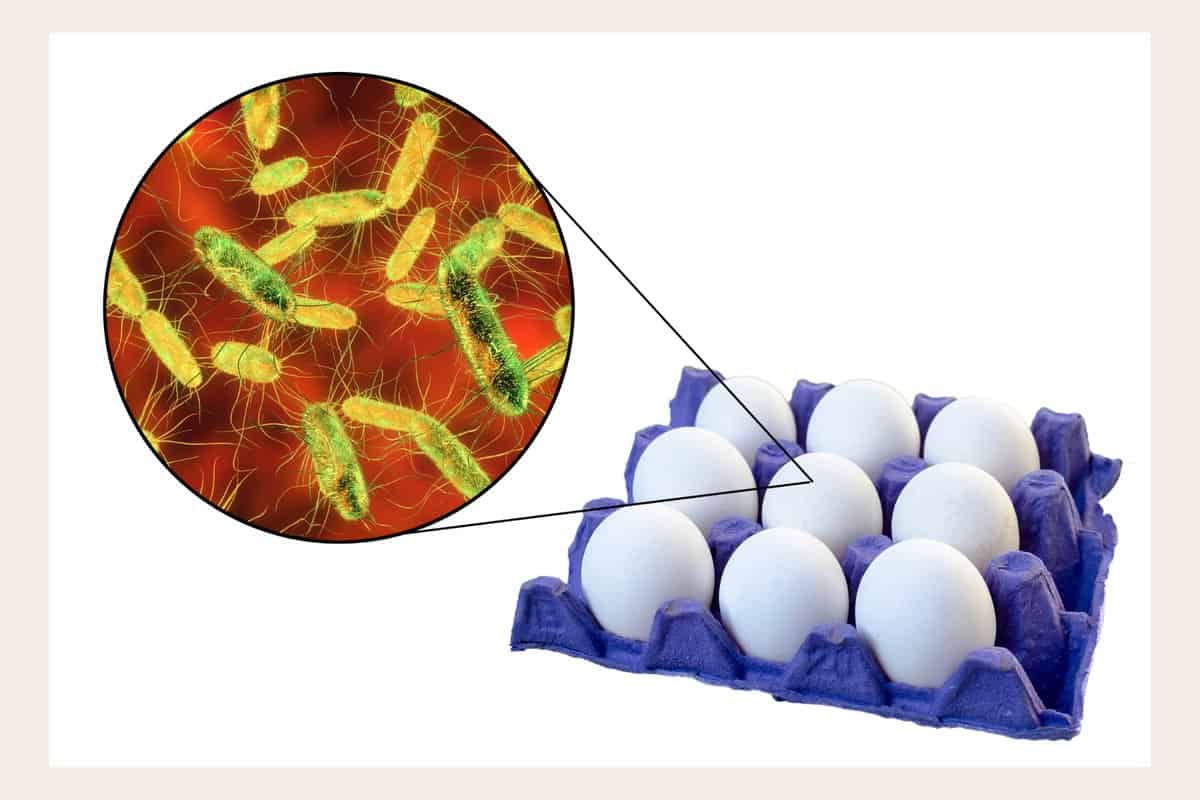
Are pasteurized eggs salmonella free?
Pasteurized eggs are a safer option than raw or undercooked eggs as they have been treated with heat to kill salmonella bacteria potentially. However, it’s important to remember that no food can ever be 100% risk-free. While pasteurization significantly reduces the risk of salmonella, there’s still a slight possibility that some bacteria may remain.
Suppose you have concerns about consuming pasteurized eggs, especially for pregnant women, people with a weakened immune system, elderly people, or young children. In that case, it’s always a good idea to consult your family doctor.
What are some recipes that commonly require the use of raw eggs?
Some dishes or recipes that come to my mind that commonly require raw eggs include Carbonara, Tiramisu, mayonnaise, Aioli, cookie dough, royal icing, eggnog, Caesar salad dressing, hollandaise sauce, and homemade ice cream. These recipes typically call for raw eggs as an emulsifier, a binder, or to add richness and creaminess to the dish. Using raw eggs might increase your risk of foodborne illness. Therefore, I highly recommend pasteurizing your eggs when making these recipes.

What are the Pros and Cons of pasteurizing eggs at home?
Pasteurizing raw eggs at home can be convenient and cost-effective to ensure you have safe eggs for consumption. However, there are some pros and cons to consider:
Pros:
Extended Shelf Life: Pasteurized eggs have a longer shelf life than raw eggs, as the pasteurization process helps to kill bacteria that can cause spoilage.
Freshness: Home-pasteurized eggs are likely to be fresher than store-bought pasteurized eggs.
Convenience: You don’t have to hunt down pasteurized eggs at grocery stores since they are not always available. You can pasteurize eggs at home as needed at any time.
Peace of Mind: By using pasteurized eggs, you can know that you are reducing the risk of foodborne illness for yourself and others who may consume your food.
Reduce Cost: Home-pasteurizing eggs can be less expensive than buying pasteurized eggs at the grocery store.
Cons:
Texture changes: Whipping pasteurized egg whites can be challenging because they have a different texture than raw ones. But don’t worry; there’s a simple fix for this. Just add ⅛ teaspoon of cream of tartar for each egg white to help stabilize the texture. With this trick, you’ll achieve a stable meringue as good as one made with raw egg whites.
Risk increase (When not following proper procedures): If not done properly, home-pasteurization can result in eggs that are not completely pasteurized, increasing the risk of foodborne illness. Therefore, you must follow my step-by-step instruction carefully.
Time-consuming: Home pasteurization can be time-consuming, as it requires careful monitoring of the temperature and timing. You need to be patient.
You don’t have the right equipment: Home pasteurization requires specialized equipment, such as a Sous Vide Cooking device which can be an additional expense.
Home-pasteurizing eggs can be a great way to ensure your eggs are safe to eat. However, following the correct procedures and taking necessary precautions to minimize the risk of foodborne illness is important.

FAQs about pasteurizing eggs using Sous Vide:
For even more delicious recipes, you may like these:

In Conclusion:
Now that you know how to pasteurize eggs using Sous Vide, you can add another skill to your culinary repertoire. Pasteurizing eggs at home using Sous Vide is a simple and effective way to reduce the risk of foodborne illness. It can open up a world of possibilities for cooking recipes that require raw eggs. Learning this useful culinary technique allows you to enjoy your favorite dishes, such as Carbonara pasta or Tiramisu, with added peace of mind. So, whether you’re a Pro or a newbie home cook, I hope you will try pasteurizing your eggs at home and use this technique to make some of my recipes on the blog.
Thanks for reading my post on how to use Sous Vide to pasteurize eggs at home. If you found this information useful and want to learn more about new cooking recipes and tips, follow my blog for future updates. You can also check out some of my other recipe posts. Don’t forget to follow me on social media to stay updated with my latest recipes and food-related content. Thanks for your support!

How To Use Sous Vide To Pasteurize Eggs At Home
- Total Time: 1 hour 25 minutes
- Yield: 12
Description
Say goodbye to the fear of raw eggs in your favorite recipes! Using the Sous Vide method, you can easily pasteurize eggs at home and safely cook classic dishes like Carbonara pasta, Caesar salad dressing, and even homemade mayonnaise. Discover our step-by-step guide to pasteurizing eggs with Sous Vide and start cooking confidently today!
Ingredients
A dozen of eggs (Or any quantity as needed)
Water
A Large Pot
A Sous Vide Precision Cooker
A Timer
Instructions
- Wash your eggs with cold water and pat dry.
- Put the eggs (with shells) into a vacuum-sealed or Ziploc bag.
- Fill a large pot with water and set your Sous Vide immersion circulator to 135F/57C.
- Once the water reaches the desired temperature, add the bag of eggs to the pot.
- Set a timer for 1 hour and 15 minutes.
- Prepare an ice bath five minutes before the timer goes off.
- After the timer goes off, turn off your Sous Vide machine, transfer the bag of pasteurized eggs to the ice bath, and let them cool for 20 minutes.
- Remove the eggs from the bag, pat them dry, and mark them with an “X” or “P” to indicate pasteurization. Do not mix them with raw eggs.
- Refrigerate the eggs immediately and use them within 5 weeks.
Notes
If you have any concerns about consuming pasteurized eggs, especially if you have a weakened immune system, are elderly, pregnant, or have children, it’s always a good idea to consult your family doctor for advice.
All in-shell pasteurized eggs are good to use within three to five weeks and must store in the refrigerator.
Some recipes that commonly require raw eggs include Carbonara, Tiramisu, mayonnaise, cookie dough, royal icing, eggnog, Caesar salad dressing, hollandaise sauce, and homemade ice cream. These recipes typically call for raw eggs as an emulsifier, a binder, or to add richness and creaminess to the dish.
- Prep Time: 10 minutes
- Cook Time: 75 minutes
- Category: Entree
- Method: Sous Vide
- Cuisine: American
Keywords: pasteurize eggs, sous vide, how to, step-by-step guide, pasteurizing egg at home.









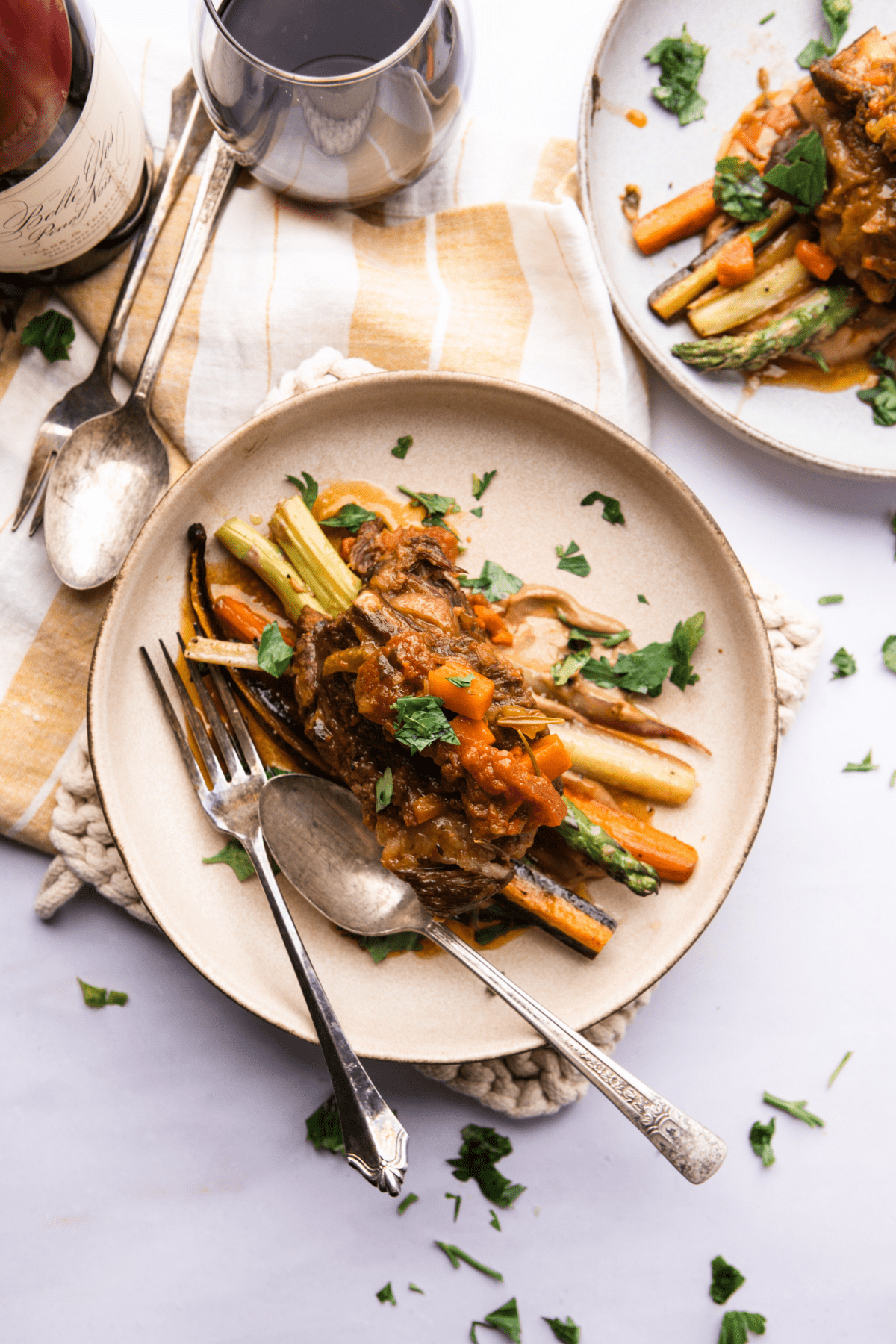
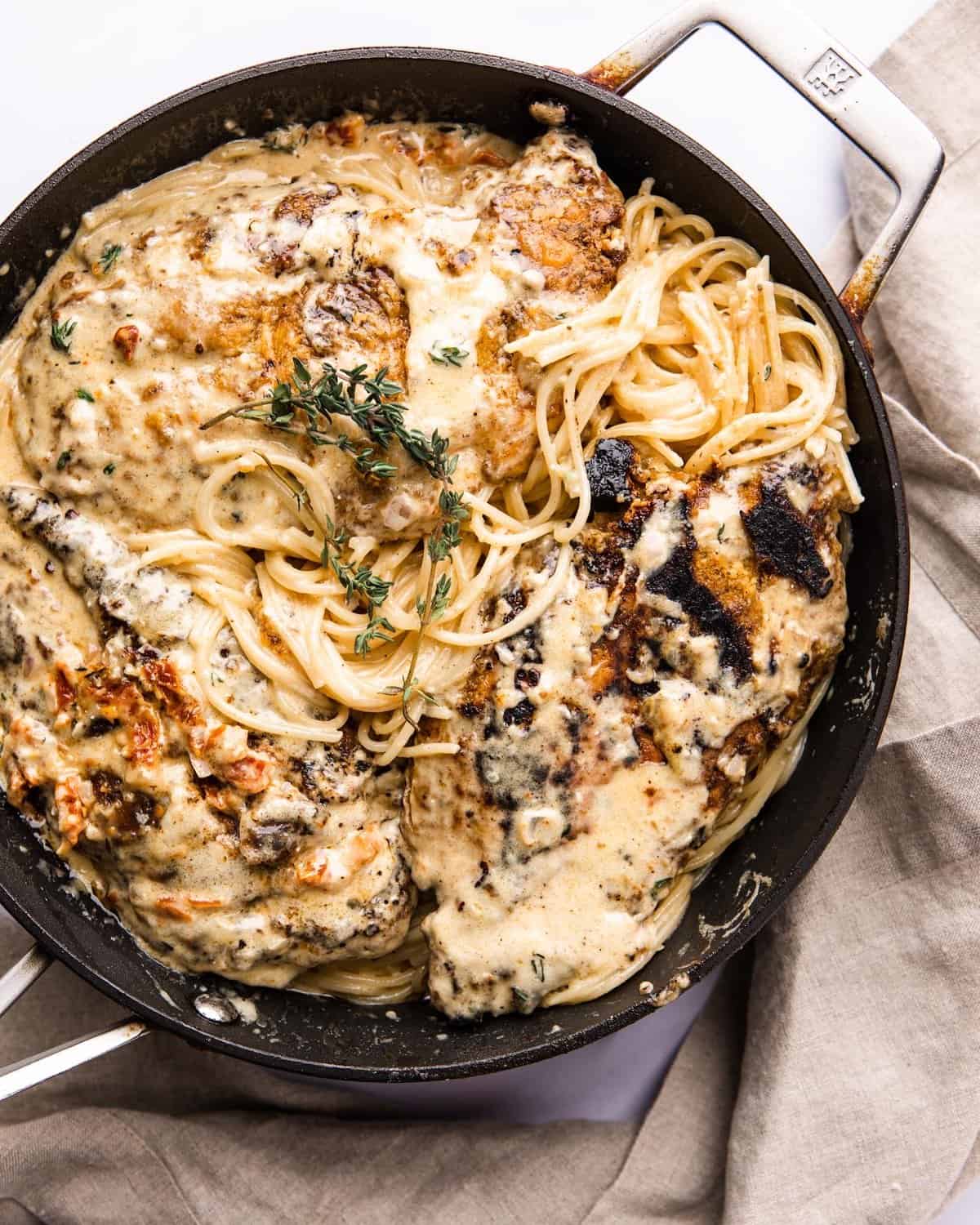






Is there any way one can just pasteurize egg whites out of the shells?
This is such a great question Rubina, I don’t know but now you spark my curiosity and I may try to do a test at home and see. I will keep you posted. But at the meantime if you really only want pasteurized egg whites, I have purchased cartons of liquid egg whites at supermarket before. Are you using it for baking? If so, you may find the pasteurized egg whites takes forever to stabilized. I have tested in my kitchen and timed myself, to whip my egg whites to stiff peak, it took me 20 minutes and you need to make sure you add 1/4 teaspoon of Cream of tartar to 1 large egg white. Thank you for reading this post.